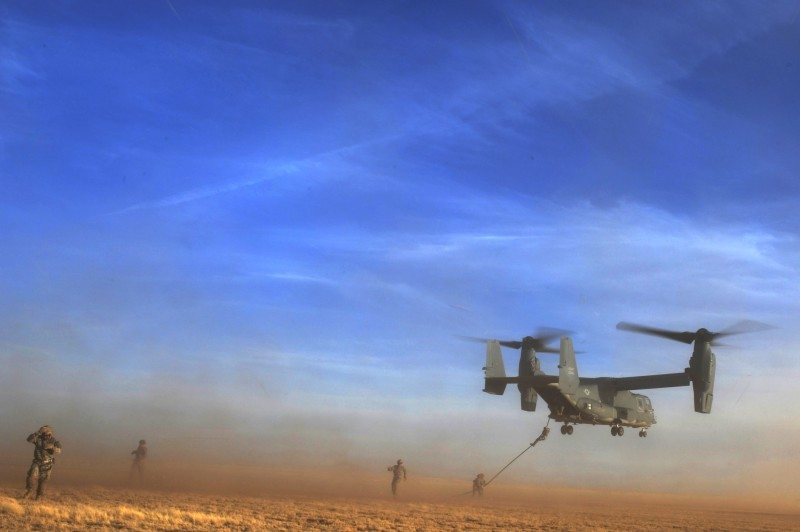U.S. Special Operations Command is working to take the improved capabilities and processes it has established over the past decade of conflict and build on them for the future, a senior Socom commander told special operators and industry representatives here.
Army Lt. Gen Joseph L. Votel, commander of Joint Special Operations Command, noted vast adaptations across Socom during a presentation yesterday at the 2013 Special Operations Forces Industry Conference.
“We have taken actions, designed processes [and] organized ourselves so that we could not [just] react to threats as they are presented to us, but really be much more proactive in terms of the things we are doing,” he told hundreds of attendees at the annual conference.
As the JSOC commander, Votel is responsible for studying special operations requirements and techniques, ensuring interoperability and equipment standardization, planning and conducting special operations exercises and training and developing special operations tactics.
He cited three key factors that have helped SOF evolve into a more proactive force, beginning with a refined “find, fix, finish, exploit and analyze” process, known across the special operations world and the military as “F3EA.” Votel described this as “the machine, the process of how we do our business.”
Maximizing that effort, he said, are Socom’s continuing efforts to strengthen the global special operations forces network. This is a pillar of the “Special Operations Forces 2020” vision that Socom Commander Navy Adm. William H. McRaven introduced shortly after taking command in 2011.
“If F3EA is the machine, then I will tell you that the network is the electricity,” Votel told the forum. “It is what we plug into to really make that machine go.”
Meanwhile, Socom has made a concerted effort to better integrate its efforts around the globe, Votel reported. This helps to focus the command’s activities, ensuring they are synchronized with other military and nonmilitary efforts and “contributing to the greater whole,” he said.
“I think those three things have helped us be more proactive and have helped us develop this very exceptional capability to dramatically … disrupt the [violent extremist organization] networks out there,” Votel said.
One of the big challenges, he said, is how to preserve these improvements and build on them for the future. “How do we transition this very excellent capability that we have invested in and built over the last 10 or 12 years into the new, emerging environments that will not be the same combat zones we have come to understand in places like Iraq and Afghanistan?” he said.
Those environments are likely to have limited basing opportunities, he said, so a desire for a minimized overt U.S. presence can be expected. Meanwhile, greater considerations for law enforcement end states should be anticipated, with special operators supporting other objectives.
Continuing, Votel said, will be “an absolute and overriding need for precision and accuracy in the things that we are doing, kinetically and otherwise.” And in the employment of special operations forces capability, “we are going to be largely operating by, with and through our partners in the future,” he said.
Votel pointed to Special Operations Joint Task Force Afghanistan as a model to help Socom continually adapt to support future operations. The first-of-its-kind division-level headquarters encompasses all in-country NATO special operations forces and assets.
McRaven lauded the new construct’s impact on special operations forces in Afghanistan during an address to the conference May 14. “Let me tell you, we are achieving in the SOF world probably the best result we have seen in many, many years in terms of synchronizing the effect on the ground on the battlefield by pulling together all three of the SOF components,” he told attendees.
The joint task force has streamlined relationships while making them more coherent and complementary, and integrated capabilities by establishing common operational concepts for all operators, Votel said.
The lessons, he said, are being applied as Socom works toward McRaven’s Special Operations Forces 2020 vision. “These things will help us in the future and as we continue to move forward,” he said.










